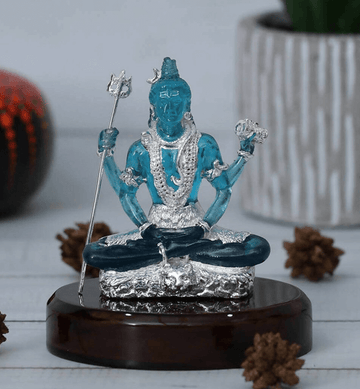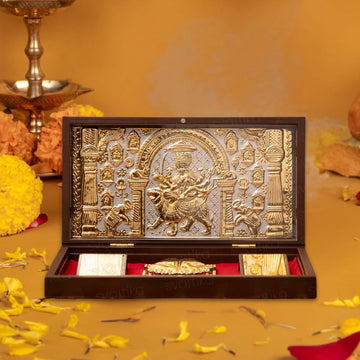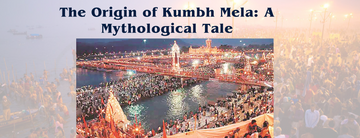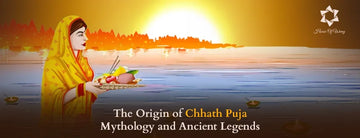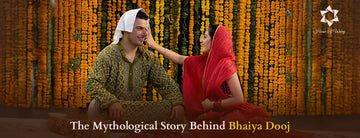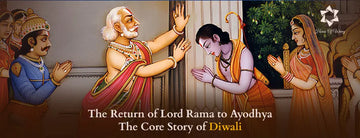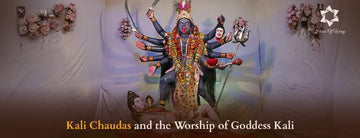What is Kumbh Mela?
Kumbh Mela is not just a festival; it is an awe-inspiring convergence of spirituality, tradition, and faith, unlike any other gathering in the world. Held once every 12 years at four sacred locations in India—Haridwar, Prayagraj (formerly known as Allahabad), Nashik, and Ujjain—this colossal religious event is considered the largest peaceful congregation on Earth. With over 100 million people participating in the event, the Kumbh Mela is an extraordinary spectacle that invites individuals from every corner of the globe to experience the depth of India’s spiritual traditions.
The Kumbh Mela is so much more than a simple religious gathering; it is a space for spiritual transformation, cultural exchange, and personal reflection. At its core, it is an event steeped in centuries of Hindu mythology, history, and religious significance, making it a remarkable representation of India's rich cultural and spiritual heritage. To truly appreciate the significance of Kumbh Mela, it is essential to delve into its origins, the ancient myths surrounding it, the rituals that define it, and the profound spiritual practices that draw millions of devotees year after year.
The Origin of Kumbh Mela: A Mythological Tale
The origins of Kumbh Mela are deeply rooted in Hindu mythology, and its story is one that continues to inspire millions. The festival commemorates the legendary Samudra Manthan—the churning of the ocean of milk, a cosmic event that played a central role in the creation of the world and the divine forces that govern it.
According to ancient Hindu scriptures, the gods and demons once embarked on a massive quest to churn the ocean of milk to extract amrit (the nectar of immortality), which would grant them eternal life. However, as the ocean was churned, a series of miracles occurred, and the Kumbh (the pot containing the amrit) surfaced. This led to a fierce battle between the gods and demons, both factions vying for control of the precious nectar.
In the heat of the struggle, drops of the divine nectar are believed to have fallen at four sacred places in India: Haridwar, Prayagraj, Nashik, and Ujjain. These locations became deeply consecrated as they were touched by the divine amrit. The Kumbh Mela thus marks the moment when the nectar of immortality was spilled onto Earth, making these riverbanks extraordinarily sacred and inviting devotees to partake in the divine blessings of the land.
The symbolism of the Kumbh Mela lies in this sacred act of capturing and distributing divine nectar—an invitation for humanity to connect with the divine and to purify themselves spiritually through rituals of devotion, penance, and prayer.
The Sacred Ritual of the Bath
At the heart of Kumbh Mela lies the profound and timeless tradition of bathing in the holy rivers, an act believed to cleanse the soul and wash away one’s sins. The Ganges, Yamuna, and Saraswati rivers in Prayagraj are considered especially holy and spiritually charged during Kumbh Mela. The convergence of these sacred rivers at Prayagraj is called the Sangam (the confluence), and it is here that the most significant of the Mela’s rituals take place.
For Hindus, water holds immense spiritual significance. It is considered the purifier of the body, mind, and soul. Bathing in the holy rivers during Kumbh Mela is a deeply transformative act. It is believed that those who dip in the waters during the festival will not only cleanse themselves of their past karmic burdens but will also receive divine blessings that bring peace, health, and spiritual freedom (moksha).
The spiritual power of these waters is not just in their physical cleansing but in their connection to centuries of tradition, mythology, and faith. The Ganges, Yamuna, and Saraswati rivers are not merely bodies of water; they are considered to be living deities in their own right. The act of bathing is a moment of sacred communion with these divine forces, which purifies the devotee in both the physical and spiritual realms.
Particularly during the Shahi Snan (Royal Bath), when millions of devotees gather for mass bathing on auspicious days, the atmosphere is electric with the collective energy of millions of souls, all seeking the same goal—spiritual liberation.
A Global Gathering
The scale of the Kumbh Mela is absolutely mind-boggling. It is estimated that over 100 million people visit the event over the course of several weeks, making it one of the largest human gatherings on the planet. People come from all walks of life—from the rich to the poor, the young to the elderly—united by their shared devotion to spirituality and the sacred act of purifying themselves in the holy waters.
Kumbh Mela is not only a gathering of religious significance for Hindus; it also attracts people from all over the world. Spiritual seekers, tourists, scholars of religion, and anthropologists flock to witness the immense scale of this festival, eager to learn about India’s religious practices and experience firsthand the deep devotion of millions of people.
Devotees arrive with deep faith in their hearts and the hope that the divine blessings bestowed during the Mela will purify them and bring peace and prosperity into their lives. They also come to receive wisdom from ascetics (Sadhus) and spiritual leaders, who offer teachings on various aspects of Hindu philosophy, mysticism, and the path to enlightenment.
For many, attending the Kumbh Mela is a once-in-a-lifetime pilgrimage. It is a time of great personal reflection, prayer, and ritual. The sheer diversity of people and the magnitude of the event create an atmosphere of unity and shared spiritual purpose that is palpable. It is an event that transcends boundaries—cultural, linguistic, and geographical—and serves as a reminder of the universal quest for spiritual meaning and connection.
A Celebration of Faith and Culture
Kumbh Mela is not just a religious gathering but a vibrant celebration of Indian culture, spirituality, and traditions. The event is a living testament to the deep spiritual practices that have been passed down through generations. Beyond the bathing rituals, there are numerous activities that highlight India’s rich cultural heritage.
The host cities during Kumbh Mela come alive with processions, satsangs (spiritual discourses), bhajans (devotional songs), and yagnas (fire rituals), all of which form an integral part of the spiritual atmosphere. The sound of religious chants fills the air, and the air is alive with the energy of devotion and ritual.
At Kumbh Mela, cultural diversity takes center stage. Pilgrims from different regions of India, from the hills of the north to the plains of the south, bring with them their unique practices, music, dance, and customs. This convergence of cultures is what makes Kumbh Mela not only a deeply religious event but also a rich cultural exchange.
The presence of ascetics, holy men, and spiritual leaders at Kumbh Mela adds another layer to the festival. These revered individuals are often seen leading processions, engaging in public discourses, and performing sacred rituals. Their teachings and actions inspire thousands of pilgrims to deepen their own spiritual practices and pursue a path of self-realization.
The sheer beauty of the event—its grand scale, the devotion of its participants, and the cultural vibrancy it embodies—makes Kumbh Mela a once-in-a-lifetime experience for anyone who attends. It serves as a reminder of the power of faith, the importance of tradition, and the timeless wisdom of India’s spiritual heritage.
Kumbh Mela is not just a festival; it is a living, breathing testament to India’s spiritual legacy. It is a place where ancient traditions meet the present, where millions of souls come together to seek spiritual redemption and connect with the divine. Whether you are a devout Hindu seeking to cleanse your soul or a curious traveler fascinated by the depth of India’s spiritual practices, Kumbh Mela offers an experience like no other.
This extraordinary gathering continues to inspire millions and offers a glimpse into the powerful spiritual forces that have shaped India’s rich cultural and religious identity for thousands of years. The Kumbh Mela is a place where faith, tradition, and culture converge, offering something unique for everyone who attends.
Explore our collection of Kumbh Mela idols at House of Wemy, meticulously crafted to elevate the spiritual ambiance of your home or car dashboard. Let Shiva’s divine presence bring peace, love, and grace into your life, as you keep the spirit of Kumbh Mela alive in your daily surroundings.

